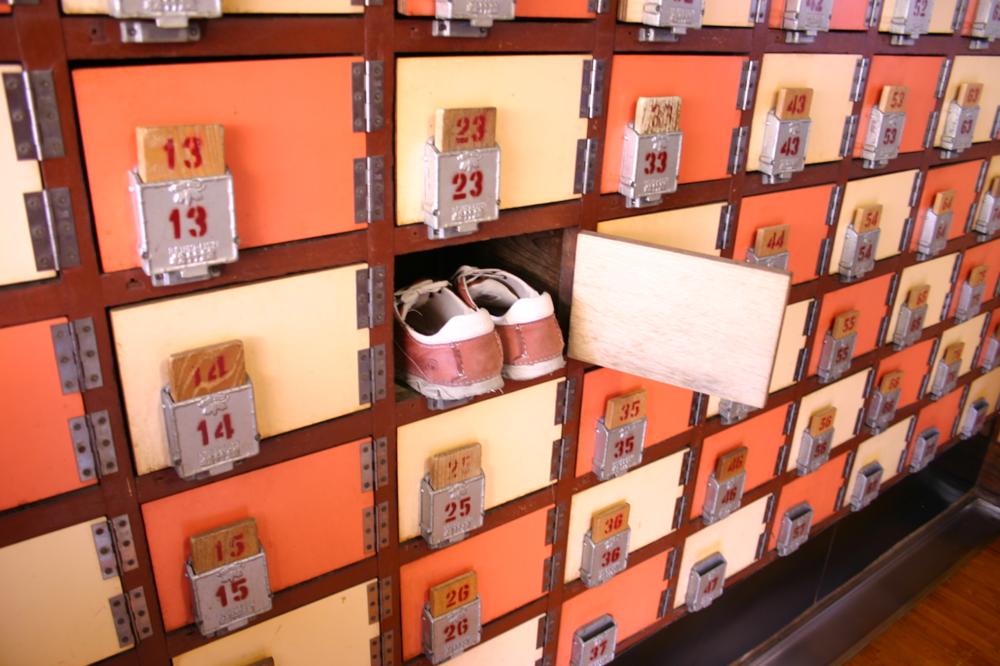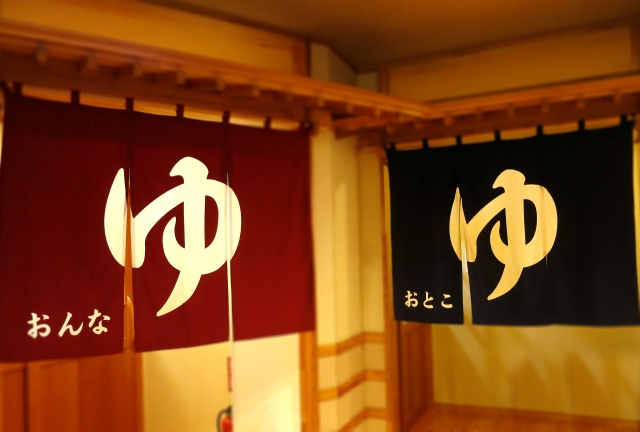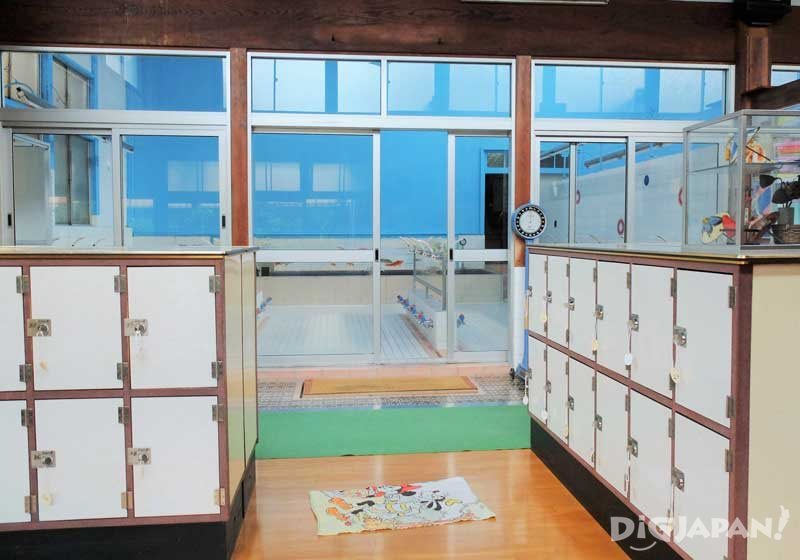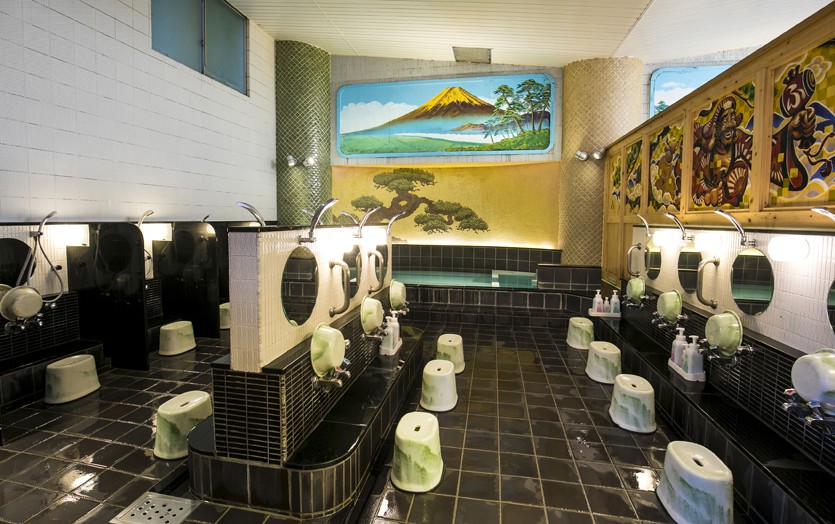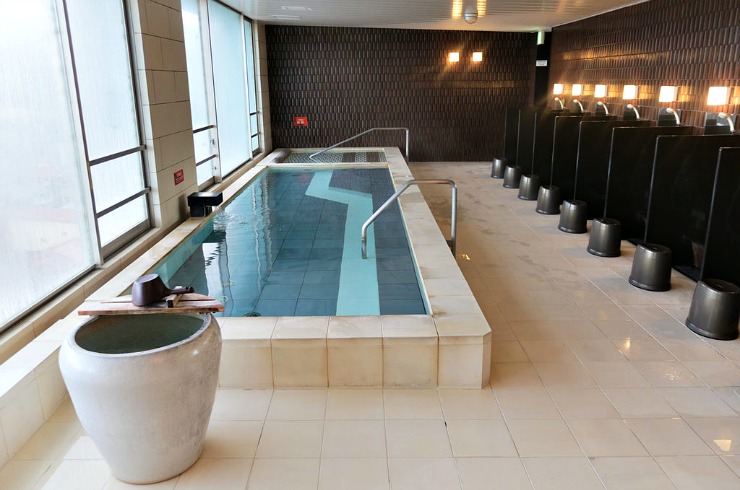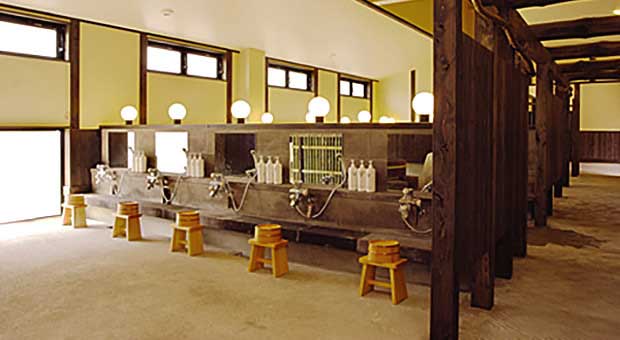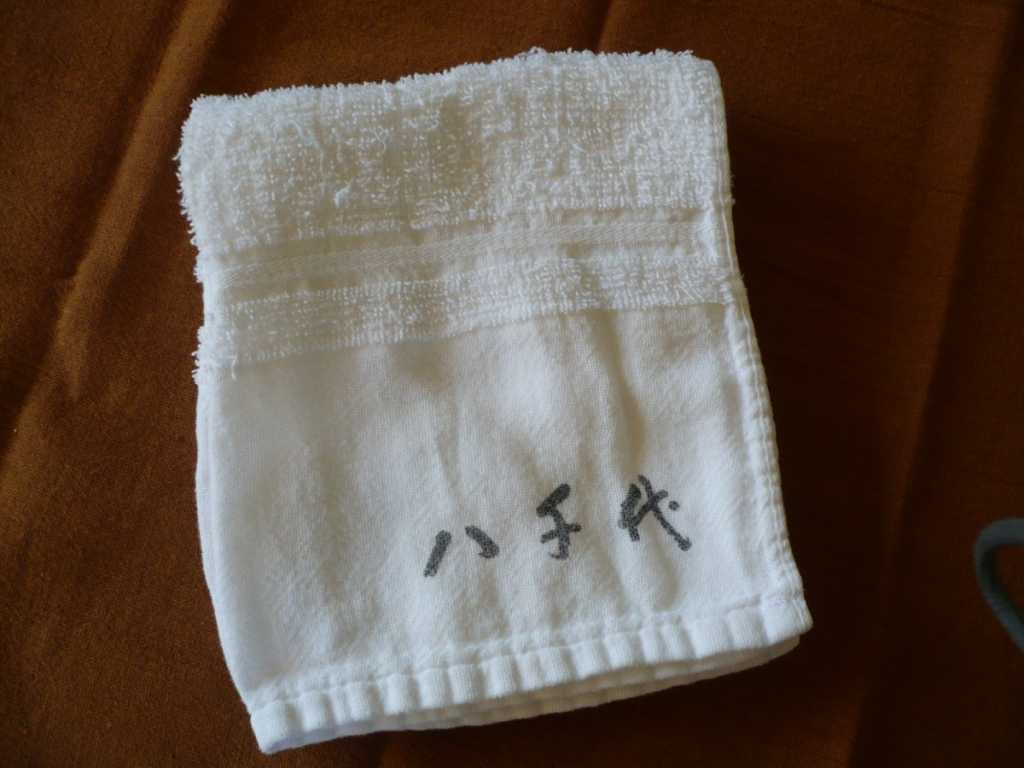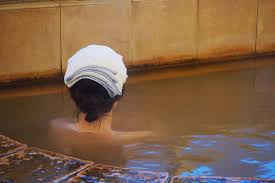If you come to Japan, you’ll likely stay at a hotel that has an onsen or sento.
Both are bathhouses, but there’s a difference.
An ONSEN is a bathhouse that uses hot spring water – naturally heated mineral water. In many cases, it’ll smell sulphuric, or look cloudy.
A SENTO uses heated tap water – most bathhouses and hotels use this type of water.
So if you find yourself in an ONSEN town, like “Nozawa Onsen” or “Shibu Onsen” it’s because the place is full of hot springs, and locals flock here for the therapeutic waters.
WHAT IS A SENTO OR ONSEN?
Although sento and onsen are public baths, make no mistake, it is NOT a bathtub. People wash themselves fastidiously before getting into the bath itself. It’s not a spa you wear your boardies or swimmers into. If you’re that hung-up about your body, then don’t go.
The Japanese have been using sento and onsen for hundreds of years, and it’s a place where families go together. They spend hours there. You’ll see grandparents, parents and kids. To the Japanese, nakedness is not the issue. It’s a place to relax, to unwind, and I was seriously surprised at their completely unaffected attitude towards nakedness. In fact, before Christian missionaries, men and women bathed together. Yep, that was OUR hang-up. So now the bathhouses are separated by gender.
Speaking of hang-ups, us tourists have a thing about not really reading rules before we jump right into the onsen/ sento experience.
An ONSEN bathhouse in Nozawa Onsen. Beautiful in winter.
Perhaps it’s anxiety? “Gah! if I pretend I’m not going to be naked, and don’t read anything about it, it will be less scary, am I right? Right? RIGHT?”
Perhaps it’s the denial of anxiety? “Whatever, I’m soooo down with this, I can do this, I’m totes relaxed Nothing to worry about, just pretend I know what I’m doing”
Perhaps it’s an attempt to manufacture cool? “I do this all the time, yeah, I’m always naked in public. Nakedness, what nakedness? No, I’M not freaked out, YOU’RE freaked out!”
But the more I travel to Japan, the more info there seems to be about onsen and sento rules, yet I see more rule-averse foreigners more than ever.
Sure, my first few visits to onsen and sento were moments of all of the above, but I Googled as much as I could to figure out the rules. And I’ve learnt a lot on my 6 trips to Japan, visiting old sentos in Ise, Kyoto, Takayama, and old Showa-era sentos (from the 50’s) in Tokyo that even our local friends didn’t know about.
So I thought I’d write a description of what to expect. It’s lengthy, but I hope it helps.
The below is if you’re using a hotel sento/onsen. The same rules apply for most local sento but the more local and smaller the sento, there are differences and they may not provide free toiletries.
I’ll start off with the general areas – so you know what to expect. Then I’ll get into the detail of what to bring and how to use the areas.
GENERAL AREAS
Shoe area – Outdoor-ish
This is where you’ll remove your shoes before entering the change room. There’s usually a shelf with numbers. Hotels usually provide slippers to walk around in, so wear them to the onsen/sento and leave your shoes here and remember which number you’ve left yours at.
The below pic is from a local SENTO, not a hotel. A hotel usually has open shelves but I couldn’t find a pic of one. So I used the local old sento shoe box instead. The same process applies.
Change room – Dry area
Past the cloth-covered entry way. Sometimes this is before the shoes area, sometimes, it’s after the shoes area. Check which is for men or women if you’re unsure.
This is the “dry” area. Lockers, sinks, toilet, water cooler etc. This is where you can brush your teeth, wash your face, dry your hair, put on make-up, get changed, store your clothes and toiletries and towels. Separated from the “wet areas” (showers and baths) by doors. Do not get this area wet, it’s to remain dry.
Shower – Wet area
Usually in the same large room as the baths, but generally in the first section of the “wet” area. Each shower is a small stall for each individual – they are separated by stone or wood partitions. Small seats, bathing bowls, buckets are placed at each shower. You are expected to sit and ONLY sit when showering so as not to splash others.
Shampoo, conditioner (or 2-in-1) and body wash are provided in most hotels.
Some shower areas may have a shower-proof set of shelves close to the door between the dry and wet areas. This is NOT the shower stall, but a separate stand alone area/ shelf where bathers can leave their toiletries or body sponges/body cloths while they bathe.
In order not to splash others, a good rule is to point your shower head towards your toes, so the spray is always going in front of you and downwards. Wherever your shower head is placed – whether you’re rinsing off your hair or your back, of your chest, point it towards your toes. It’ll mean that the spray is going towards the sink hole under your feet, and NOT to the other bathers behind or next to you. Also, don’t press the shower head against your skin as it will spray to the sides and hit those sitting next to you. Give some space between the shower head and your skin and hair.
Bath/s – Wet area
Has numerous baths, different temperatures, some have outdoor baths as well, some have saunas, some have cold baths. Shower before getting in and out of different baths. Always shower after your sauna before getting into a bath.
May also have a steam room or standing shower.
Only get into a bath once you’ve washed yourself well. Like 10-15 minutes of washing.
Nothing should be put into a bath other than your body. Your small towel is to be placed on your head. Hair, clothes, detergent, body wash, body sponge or body towels are not to touch this water. The locker key around your wrist is ok.
Credit: Epic Adventures
GENERAL BEHAVIOUR
You Don’t Matter
Trust me when I say this – no one gives a shit about you. Bathers are everyone from grandparents to youths with friends, to salary men/ women after work, to parents with kids. Everyone uses the baths to wind down before or after dinner. It’s a rare occasion of peace. The last thing they care about is you.
Body Positivity
It’s super chilled, no once cares about their body image. And there’s very little “competitive” behaviour – no staring, no pointing, no gut clenching, sucking in of the waist. People just let it hang out, and not one is “looking” at other people. People generally keep their eyes down, yet walk around pretty confidently.
People treat it like a spa retreat, or after a yoga or meditation session. Quiet talking. Very little eye contact.
Community
Everyone cleans up after themselves. Even before and after using the shower stalls. Put things back in their place.
Cleanliness
Showing that you’re cleaning yourself well before you enter a bath is good manners. It’s also very calming and relaxing to take the time to pay attention to your body, to thank it for the hard work it has been through to get you to this point in your life.
In local sentos, the bathers are very conscious of outsiders using their baths, so please be aware that a quick 5 minute shower is not going to cut it. I mean, would you share a bath with a stranger who didn’t fully clean themselves?
High Rotation
Bathers do not stay in the baths for too long – maybe 5 minutes max at a time. They rotate move to another bath, go to the sauna, rinse off, go to the outdoors bath. They are not just sitting in one bath the whole time. Some even go back to the shower to wash their hair or brush their teeth. Then go back to the bath again.
WHAT WILL I NEED?
2 towels – 1 big, 1 small
1 is a regular-sized towel to dry yourself.
The other is a much smaller “hand-drying” or “tea towel” sized towel – that’s to wash yourself while in the shower, and also to WIPE excess water off in the bathing area BEFORE before you get back to the change room so you don’t drip water everywhere. Most hotels will provide you both sizes of towels. Take both with you to the onsen, but keep the larger towel in the locker, and only bring the small towel with you into the wet/shower area.
Pro level:
Bring a body sponge/ wash cloth. You’ll bring BOTH body sponge/ wash cloth and small towel with you into the wet area. You’ll wash yourself with this body sponge/ wash cloth, then place it on the shelf in the wet shower area before going to the bath. Bring the small towel with you in the bath area, and fold it into a square and place it on your head. You can then use this dry small towel to dry yourself off after your bath, before entering the change room.
Hair Band/ Hair Clip/ Shower cap
Women or men with long hair – a hair band or hair clip to put up your hair. YOUR HAIR SHOULD NOT TOUCH onsen/sento water. I once went into an onsen after a particularly long-haired group of women (Aussie Aussie Aussie Oi Oi Oi), and they had used the bath as their private hair soak/ conditioner/ de-tangler. I’ve discovered that if you go through life never feeling bunches of a stranger’s hair on your bare feet, you are truly #blessed.
STEP-BY-STEP
- The first rule is – no photos. So please please please don’t be THAT tourist (aka dickhead). That’s the reason this post is so low on pics. You’ll only see the exterior of the onsens I’ve been too. The pics of the inside are from public photos made by the onsens/ sentos themselves.
- Take off your shoes, put them on a shelf, remember the number. If there are boxes (local sento usually have boxes with keys) place shoes in box and take key.
- Enter the Dry area Change Room. Find empty locker – usually has key in it. Put your shoe box key in locker. Undress and put all your stuff in the locker.
- Lock the locker, take the key and put it around your wrist (usually comes with a stretchy thing that’s like a hair tie).
- Take your toiletries, body sponge, small body towel with you into the Wet Area – Showers.
- Find empty shower. Turn on the shower and “clean” the stall. It’s considered good manners to do so. Just point the shower at the seat, the wash bowl, the bottles of shampoo, conditioner, body wash, mirror.
- Sit on the small stool.
- Place the wash bowl under the “tap”. Turn the tap on by pushing lever or pushing the button. Depends on the set up. The bowl will fill, use it to splash yourself.
- Use the bowl to “wash” or “suds up” your body sponge/ body cloth or small body towel.
- You can also shave, brush your teeth, wash your face to remove make-up at these shower stalls.
- Wash yourself. THOROUGHLY. Use the body sponge/ body cloth or the small body towel and scrub. Take a moment to care for your body, to thank it for its labours to bring to you to this moment, to aid in continuing your journey. Seriously therapeutic and meditative.
- Take special care of feet. There is a small “ledge” or step on most stalls – so while sitting, you can put one foot at a time on this and wash your feet carefully. It’s considered good manners to be quite attentive, and really get the soap suds in between toes.
- Use the body sponge/ small body towel on your back, under arms, between legs, everywhere. You want to take at least 10 minutes to wash.
- Washing hair – if your hair is long, try washing it in the standing shower or before you get to the onsen/ sento. It’s very difficult to wash long hair while seated. To avoid splashing others while washing your hair, many women turn their heads bent down, chin to chest, and wash with their hair hanging in front of their faces. They then point the shower head in front of them and towards their toes. It allows them to control the shower spray as the shower head is pointed directly at their toes and in front of them.
- After washing thoroughly, wash the bowl, and the shower stall area again with the shower head. Spray your seat and the surrounding area, to wash away any soap suds. Take care not to spray anyone next to you.
- Take your toiletries and place them on the communal shelf in the wet area (usually located by the doors leading back to the dry area change room).
- Tie up your hair so it’s above your neck line. A bun which sits low on the neck will still touch the bath water. A long pony tail will still touch the bath water. So put your hair up in a high bun.
- Take your small towel with you. Before getting into a bath, test the water by taking a small bucket (usually around the bath) and dunking some water from the bath onto your feet. It will give you an idea of whether it’s too hot for you.
- If the temperature suits, walk into the bath. Fold the towel and place it on your head. Or if you’ve tied it up, wrap the small towel on your head.
- Either sit on step to get used to the temperature or go all in and sit neck-deep in the bath.
- Use the small towel on your head to wipe any sweat. If it’s wrapped around your head, still do not let this towel touch the bath, even if it is clean and has not been used.
- Take it easy. DO not stay in the bath for too long. If you’re feeling hot, you’ve already hit your limit. Step outside and drink some cold water.
- Once you’ve had enough of the baths, rinse off a the shower. Again, wash the stall, wash yourself, then wash the stall again.
- Head to the doors to the dry area and BEFORE you go through, dry off or wipe off any excess water.
- Step in the change room and use the key that should STILL be around your wrist, to open your locker.
- Place your wet items as carefully in the locker to avoid leaving any wetness. Most hotels have a wet towel basket to leave your wet towels, but some expect you to be able to manage your small wet towel or body sponge. You can hang this over your open locker door while you dry off and get dressed.
- Keep your locker area clear. Make sure you don’t get in the way of the other bathers whose lockers may be next to, under or above yours.
- Dry off with the big towel, get dressed.
- Go to the sink area and use the toiletries there. Most hotels have moisturiser etc.
- If you’re naked and want to sit down, place your towel on the stool or seat before doing so.
- Dry your hair, get dressed, do your make up – in whatever order you like. Just be considerate of those around you. If it is really busy, then do your make up and dry your hair in your own room.
- Take all your belongings, your shoe box key and leave the locker clean and with the locker key back in.
- Leave relaxed and knowing onsen and sento are places of peace and calm. YAY you!
GOLDEN RULES
- WASH THYSELF – yep, between the toes, bums, cracks, bits – wash it all.
- BE NAKID – I once had to tell two East Asian ladies that they couldn’t wear their sweat-stained bras in the bath, and that they cannot pour bath salts into the bath. It was a great day for me.
- NO TATOOS – yup, sorry, if you have a tat, you’re not allowed.
- NO ALCOHOL – also ties in with the “NO DICKHEADS” rule in most places, but there have been moments where we’ve discovered board shorts and cans of beer have coexisted in a bath.
- NO LOUDNESS – do you really need everyone to know what your child’s name is and why he has a rash? No. And just because they’re Japanese doesn’t mean they don’t understand what “fuck” is.
- HAVE CHILL – if it’s your first time, and you’re going in with mates, and you feel awks, just say so, ask for help, and don’t overcompensate with guffaws and loud stories. You just end up looking like you’re desperately flexing.
- CLEAN UP AFTER YOURSELF – Community. This is what it’s all about. You’re naked with strangers.
A very old, local, traditional bathhouse in Nozawa Onsen. It’s run by the community.
Sure, you’ll likely freak out a little at the thought of bathing with strangers, but here’s the thing – the Japanese really do not care. And once you get over your own body culture issues, you’ll start to enjoy onsen and sento as a relaxation, not a kink or a novelty. Until then, I hope this guide helps you treat this cultural experience with respect and without fear. Safe travels, friend.
Other useful sites/ guides:
